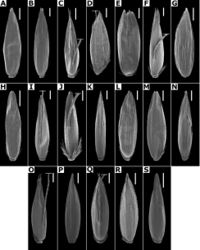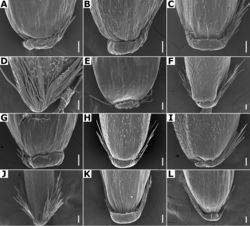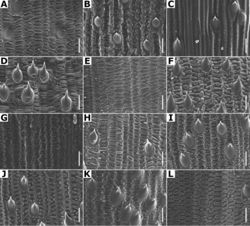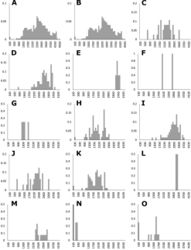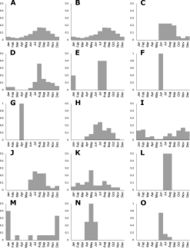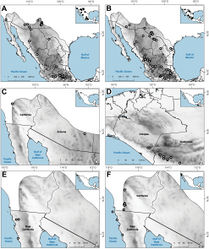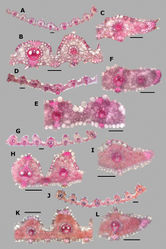Agrostis pallens
| Notice: | This page is derived from the original publication listed below, whose author(s) should always be credited. Further contributors may edit and improve the content of this page and, consequently, need to be credited as well (see page history). Any assessment of factual correctness requires a careful review of the original article as well as of subsequent contributions.
If you are uncertain whether your planned contribution is correct or not, we suggest that you use the associated discussion page instead of editing the page directly. This page should be cited as follows (rationale):
Citation formats to copy and paste
BibTeX: @article{Vigosa-Mercado2023PhytoKeys230, RIS/ Endnote: TY - JOUR Wikipedia/ Citizendium: <ref name="Vigosa-Mercado2023PhytoKeys230">{{Citation See also the citation download page at the journal. |
Ordo: Poales
Familia: Poaceae
Genus: Agrostis
Name
Agrostis pallens Trin., Mém. Acad. Imp. Sci. Saint-Pétersbourg, Sér. 6, Sci. Math., Seconde Pt. Sci. Nat. 6,4(3–4): 328. 1841. – Wikispecies link – Pensoft Profile
- [[=Agrostis diegoensis|=Agrostis diegoensis]] Vasey, Bull. Torrey Bot. Club 13: 55. 1886. Agrostis multiculmis Vasey ex Beal, Grass. N. Amer. 328. 1896, nom. inval., pro syn. Type: USA. California: San Diego, 1884, C. Orcutt s.n. (lectotype, designated by Vigosa-Mercado (2022a[1]: 2): US (US00131740 [image!]); isolectotypes: GH (GH00022962 [image!]), K (K000838209 [image!]), NY (NY00327625 [image!]), OSC (OSC0001812 [image!]), W (W19160036561 [image!])).*
Type
America borealis, J.D. Hooker 243 (holotype: LE-TRIN (LE-TRIN-1634.01); isotype: US [fragm. ex LE-TRIN] (US00156470 [image!])).
Description
Plants perennial, rhizomatous. Tillers extravaginal, with cataphylls. Rhizomes up to 10 cm long. Culms 10–70 cm long, erect or decumbent at the base, nodes 2–7, glabrous, sometimes rooting at the lower nodes, internodes glabrous. Leaves mostly cauline; sheaths 2.5–13 cm long, longer or shorter than the internodes, glabrous or scaberulous; ligules 1–5 mm long, longer than wide, dorsally scaberulous, apices acute, lacerate; blades 2.5–14 cm long, 1–4 mm wide, flat, involute when drying, scaberulous on both surfaces. Panicles (4–)5–20 cm long, 0.4–3 cm wide, contracted to open, dense to lax, lanceolate to narrow ovate, sometimes spiciform, sometimes partially included in the upper sheaths; branches appressed to ascending, rebranching from about mid-length, scaberulous, without spikelets near their base, inferior branches 1.5–3 cm long; pedicels 0.5–4 mm long, appressed to ascending, scaberulous. Spikelets 2–3.5(–4) mm long, greenish to stramineous, sometimes tinged with purple; glumes equal to subequal, lanceolate, apices acute, 1-veined, scaberulous on the keel, sometimes also on the body, lower gluma 2–3.5(–4) mm long, upper glume 1.8–3.5(–4) mm long; callus pubescent, with two bunches of trichomes, sometimes short and inconspicuous; lemmas 1.5–2.5 mm long, elliptic, apices entire, acute, or toothed, 5-nerved, veins prominent throughout or only distally, unawned, sometimes awned subapically to about mid-length, awn 0.5–1.5(–2.5) mm long, straight; paleas absent or up to 0.2 mm, veinless, glabrous; anthers 3, 0.7–1.5 mm long. Caryopsis 1–1.5 mm long, elliptic; endosperm solid. 2n= 42, 56 (Harvey 2007[2]).
Anatomy and micromorphology
Leaf blades flat in transversal section; adaxial furrows deep, narrow; adaxial ribs rounded; keel absent; first order bundles circular in outline, sheath interrupted adaxially and abaxially, abaxial sclerenchyma in strands or girders, narrowing towards the bundle, adaxial sclerenchyma in strands or t-shaped girders; second order bundles circular in outline, sheath interrupted abaxially, abaxial and adaxial sclerenchyma in strands; intercostal sclerenchyma absent; leaf margins with well-developed sclerenchyma caps, rounded; colorless cells absent (Fig. 22G–I). Lemmas with transversal thickenings polygonal, wider than the unthickened portions of the wall; prickle hairs abundant (Fig. 7K).
Distribution and habitat
Agrostis pallens is distributed from British Columbia, Canada, to Baja California, Mexico, and is also present in Montana and Utah (Harvey 2007[2]). In the study zone, this species has been collected in southern California and the Mexican state of Baja California (Fig. 18F). It grows in coastal sands, stream edges, temperate forests with Pinus or Quercus, and xeric shrublands, between 40–1635 m a.s.l. (Fig. 9O).
Phenology
Specimens with spikelets have been collected from June to August (Fig. 10O).
Commentaries
It has been reported for other regions that panicles can reach 6(–8) cm wide (Harvey 2007[2]).
The Mexican populations of A. pallens have lemmas with longer awns, up to 2.5 mm long, than those of southern California, but the other characters are congruent with the previous descriptions of this species. The plants of lower elevations have more contracted panicles than those of higher elevations, as noted previously by Harvey (2007)[2]. Plants of lower elevations are often confused with A. exarata, from which they differ in the rhizomatous habit, mostly cauline leaves, and palea absent or up to 0.2 mm long (vs. usually caespitose habit, basal and cauline leaves, palea often present, up to 0.8 mm long in A. exarata).
Conservation status
Agrostis pallens is apparently a rare species in the study zone. It is represented by 12 collections, with several populations occurring in four protected areas. The EOO is 10,902 km2 and the AOO is 48 km2. Following the IUCN criteria, the preliminary assessment category is Vulnerable (VU).
Representative specimens examined
Mexico. Baja California: Municipio Ensenada, S bank of arroyo Jatay, 1.5 km from the mouth, [32.01673537°N, 116.8665199°W], 40 m alt., 11 Jun 1980, R. Moran 28770 (MEXU [*,**], SD). USA. California: Riverside County, at Idyllwild, in San Jacinto Mountains, [33.746537°N, 116.715288°W], 1635, m alt. 14 Aug 1971, P.C. Baker 7110 (LOB). San Diego County, Cuyamaca Rancho State Park, 0.4 mile NE of intersection of state highway 79 and Stonewall Mine Road, ca. 100 m NE of Los Caballos equestrian campground and 20 m south of Stonewall Mine Road, in north-treading drainage, 32.9745°N, 116.571°W, 1440 m alt., 26 Jun 2005, L. Hendrickson 1099 (SD [*, **]). See Suppl. materials 2, 3 for additional examined specimens.
Taxon Treatment
- Vigosa-Mercado, J; Delgado-Salinas, A; Alvarado Cárdenas, L; Eguiarte, L; 2023: Revision of the genus Agrostis (Poaceae, Pooideae, Poeae) in Megamexico PhytoKeys, 230: 157-256. doi
Images
Other References
- ↑ Vigosa-Mercado J (2022a) Typification of names in Mexican species of Pooideae (Poaceae). Phytoneuron 2022–44: 1–4. https://www.phytoneuron.net/wp-content/uploads/2022/10/44PhytoN-PooideaeLectotypes.pdf
- ↑ 2.0 2.1 2.2 2.3 Harvey M (2007) Agrostis. In: Barkworth M Capels K Long S Anderton L Piep M (Eds) Flora of North America North of Mexico (Vol.24) Oxford University Press, New York, 633–662. http://floranorthamerica.org/Agrostis
